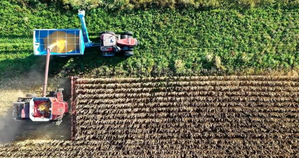Barcelona: The threat of desertification in Spain is growing due to climate change and the intensive pressure of land use, a Spanish expert told Xinhua in an interview on Tuesday.
Gabriel del Barrio from the Spanish National Research Council’s Experimental Station of Arid Zones (EEZA) said: “The amount of land under active degradation has tripled in just ten years. This will continue to grow because the land is being subjected to very intense use in order to extract the vegetables and other agricultural products necessary for a socioeconomic dynamic that is overheating the system.”
Nevertheless, the researcher explained that the term desertification can be misleading as it suggests that the land affected by the phenomenon could become desert. He insisted that “there will never be a desert in Spain.”
Deserts are complex functioning ecosystems that have evolved over millions of years, he said, adding: “What we are talking about is degraded land, which is a different thing.”
Desertification refers to the permanent degradation of arable land in arid, semi-arid and sub-humid areas, due to intense pressure from farming, urbanization and climate change.
The United Nations Educational, Scientific and Cultural Organization (UNESCO) warned earlier this month that 90 percent of the planet’s land surface could become degraded by 2050.
Up to 75 percent of Spanish territory is “susceptible to desertification”, according to the country’s Ministry for Ecological Transition.
Meanwhile, the EEZA reports that the percentage of land in Spain that can be classed as degraded currently stands at 24.6 percent.
The Spanish government has warned that higher temperatures have caused arid climates to double since the mid-20th century, at an annual rate of about 1,500 square kilometers per year, Xinhua news agency reported.
As Del Barrio said, “An increasingly arid climate undermines the resilience of ecosystems and makes it harder for them to recover.” At the same time, the effect of climate change “increases the intensification of human activity”, such as the expansion of irrigation systems into dryland areas.
Some 22 percent of irrigated land is considered degraded or very degraded, according to Del Barrio. Spanish authorities say that 79 percent of the country’s water resources are used for agriculture and livestock farming.
“Land degradation is inherent to our presence in the world, but we can do some things to try to control it. We can, for example, respect the cycles of production and renewal of the natural resources that replenish slowly,” said the researcher, referring to underground water reserves known as aquifers.
The intensification of agricultural land use is the principal cause of land degradation, according to Del Barrio. The dynamic of the current market “forces farmers to produce in excess” in order to satisfy the strict demands of large food distribution chains.
In today’s globalized world, the effects of land degradation can also be felt across continents. Del Barrio cited the phenomenon of telecoupling, which refers to socioeconomic and environmental interactions over long distances.
“The areas in Spain of intensive agriculture and livestock farming are importing fodder produced in South America, which is at the expense of degrading native forests in regions of the Amazon, so the relationships are becoming increasingly complex,” he said.
UNESCO also sees land degradation and desertification as a global issue, and stresses the importance of fertile soil in maintaining ecosystems and biodiversity. It has warned that 75 percent of soils are already degraded, affecting 3.2 billion people.
–IANS


Comments are closed.